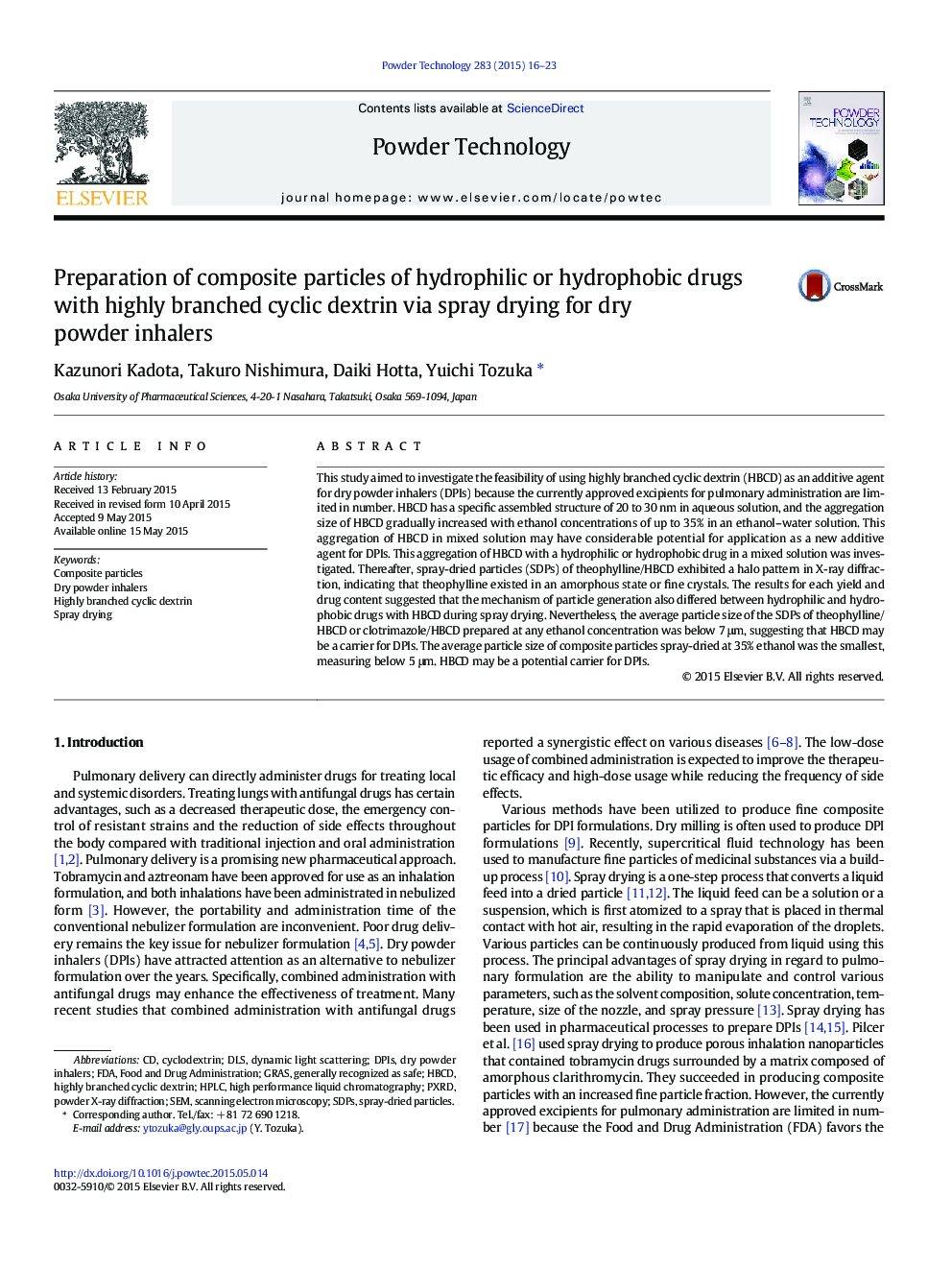| Article ID | Journal | Published Year | Pages | File Type |
|---|---|---|---|---|
| 235389 | Powder Technology | 2015 | 8 Pages |
•HBCD is a promising excipient for dry powder inhalers.•HBCD forms aggregation structures in aqueous solution that are 20–30 nm in size.•The aggregation mechanism differed between hydrophilic and hydrophobic drugs.•The particle formation with HBCD differed between hydrophilic and hydrophobic drugs.•The particle size of SDPs spray-dried at any ethanol concentration was below 7 μm.
This study aimed to investigate the feasibility of using highly branched cyclic dextrin (HBCD) as an additive agent for dry powder inhalers (DPIs) because the currently approved excipients for pulmonary administration are limited in number. HBCD has a specific assembled structure of 20 to 30 nm in aqueous solution, and the aggregation size of HBCD gradually increased with ethanol concentrations of up to 35% in an ethanol–water solution. This aggregation of HBCD in mixed solution may have considerable potential for application as a new additive agent for DPIs. This aggregation of HBCD with a hydrophilic or hydrophobic drug in a mixed solution was investigated. Thereafter, spray-dried particles (SDPs) of theophylline/HBCD exhibited a halo pattern in X-ray diffraction, indicating that theophylline existed in an amorphous state or fine crystals. The results for each yield and drug content suggested that the mechanism of particle generation also differed between hydrophilic and hydrophobic drugs with HBCD during spray drying. Nevertheless, the average particle size of the SDPs of theophylline/HBCD or clotrimazole/HBCD prepared at any ethanol concentration was below 7 μm, suggesting that HBCD may be a carrier for DPIs. The average particle size of composite particles spray-dried at 35% ethanol was the smallest, measuring below 5 μm. HBCD may be a potential carrier for DPIs.
Graphical abstractFigure optionsDownload full-size imageDownload as PowerPoint slide
